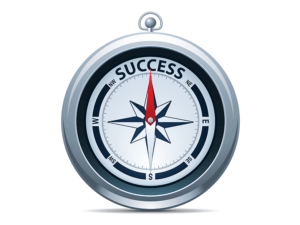CEMMethod guides the CX Management Strategy
Born in 2001. Launched in 2006. Now in version 11.
CEMMethod guides the CX Management Strategy
Born in 2001. Launched in 2006. Now in version 11.
Click on the image to access the individual pieces, however, to whet your appetite three of the most popular articles:
The Customer Experience Management Office – The What and the Why
Three fundamental Building Blocks for CX
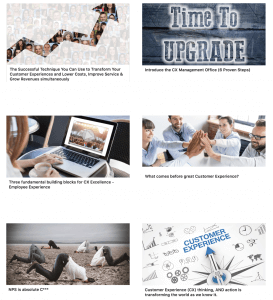
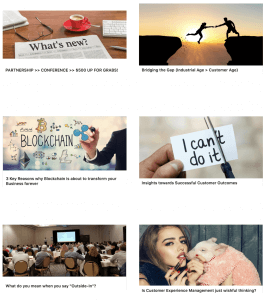
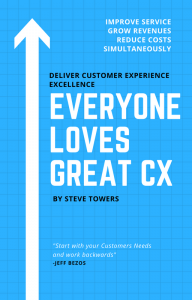 Additionally, the new book is in draft, “Everyone Loves CX”, and will be published early next year. If you want to join the list and get access to the preview, samples and associated materials register here.
Additionally, the new book is in draft, “Everyone Loves CX”, and will be published early next year. If you want to join the list and get access to the preview, samples and associated materials register here.
With a dozen new case studies and terrific insights from global leaders, I examine some of the next practices and how you can deploy them with immediate effect in your own world.
 Rockstar CX
Rockstar CXIf videos are your thing then do hook up with James Dodkins and the Rockstar CX initiative.
He interviews live on Facebook the leading CX Professionals from across the globe at:
https://www.facebook.com/pg/JDODKINS/videos/
OK, I am off to the beach now. Get that G&T ready, please!
An important question if you are tasked with making Customer Experience #CX work for your organization.
Twitter – Trends emerge when you monitor hashtags, and the shorthand for Customer Experience #cx is a good starting point. When you contrast #CX with other popular management approaches such as #lean #lss and #bpm is interesting:
With the latest and most effective CX techniques and toolkits wrapped in the CEMMethod, this is sure to be a terrific one-dayer.
https://www.bpgroup.org/denveracxp.html
87% of buyers will pay more for a better customer experience.
ACXP attendees will learn the world famous CEMMethod. The CEMMethod was created in 2001 when BPG was working with the Virgin Group. They realised together that to progress in an ever-changing world, you have to have an explicit, outside-in focus on the customer in everything you do..
 Since then, the CEMMethod has evolved, consolidating tools, techniques and mindsets from some of the best performing and most innovative companies in the world. People like Apple, BMW, Bentley, IBM, Amazon, Emirates Airlines, Zara, Zappos, State Farm, Disney, Google, Facebook, Uber and many more.
Since then, the CEMMethod has evolved, consolidating tools, techniques and mindsets from some of the best performing and most innovative companies in the world. People like Apple, BMW, Bentley, IBM, Amazon, Emirates Airlines, Zara, Zappos, State Farm, Disney, Google, Facebook, Uber and many more.
https://www.bpgroup.org/denveracxp.html
Professionals using the CEM Method are simultaneously lowering costs, growing revenues and delivering outstanding customer experience in more than 4,000 companies around the world. These individuals are the driving force behind some of the world’s best performing organizations.

 The secret to the CEM Method’s success lies in its ability to link external customer experience to internal back-office operations. This is a claim that no other method can make. Learn the methodology that the best-performing companies in the world are using as their customer experience backbone.
The secret to the CEM Method’s success lies in its ability to link external customer experience to internal back-office operations. This is a claim that no other method can make. Learn the methodology that the best-performing companies in the world are using as their customer experience backbone.
Please join us in Denver!
https://www.bpgroup.org/denveracxp.html
Customer Experience Training, Accreditation and Certification https://www.bpgroup.org/training.html
The #CX and #CPP program for the next six months has just gone live! We are across USA, Europe, South Africa, Australia and the Middle East. If you are looking to upskill and achieve international recognition then review the new program. Is it great? Well don’t just take our word for it, watch this testimonial and review the others at
https://www.bpgroup.org/training.html
We hope to see you soon!
The ‘open’ program for the next six months operates in Johannesburg, Melbourne, Washington DC, Denver, London, Dubai, Orlando, Los Angeles, and more…
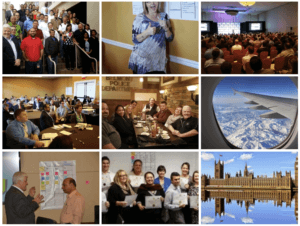
Companies wishing to build customer loyalty in the midst of a world being digitally transformed need to introduce the Customer Experience Management Office.
Existing approaches such as Program Management Offices do not address the need of the organization to become customer-centric. According to the Project Management Institutes definition “PMO’s serve as a means to standardize project-related governance processes and facilitate sharing of resources and tools. Others serve as centers of excellence, and still, others align project and program work to corporate strategy across an enterprise.”
You may be doing things right, but are you doing the right things?
There is a requirement to call out the need for Customer Centricity in literally everything the enterprise does.
Recently I was working with a global retailer who claimed that they managed Customer Experience via the projects orchestrated by the PMO, so I asked for their measures of success within the PMO.
Interestingly the primary metrics focused on three things – coming in on time, to the budget and achieving agreed project deliverables. So, digging deeper revealed the ‘deliverables’ were mostly aligned with functional objectives and only 15% of those talked to the challenge of becoming customer centric. Even more so – less than 10% talked about joined-up thinking across the silos on behalf of better customer experiences.
Therefore, evolving the PMO to a CXMO is required to centralise the enterprise-wide approach to ensure a consistent and strategic effort.
Find out more and register for the CXMO webinar > JOIN HERE <

This isn’t another excuse for empire building. The strategic CX justification revolves around enhanced/redefined Customer Experiences that deliver improved service, lower costs and higher revenues (referred to as the ‘triple crown’) initially from the enterprise-wide consolidation of customer-centric effort, then through systematically aligning everything to contribute to Successful Customer Outcomes.
Hence the CXMO usually has a limited lifespan of 3-4 years as once the discipline is established and everyone is aligned to Successful Customer Outcomes the resources can be devolved back into the business.
In summary, establishing a CXMO is a systematic and strategic initiative.
Co-ordinating everyone, from the boardroom to the tea room, is essential to ensure the shift from the industrial age to the customer centricity age delivers practically and immediately.
Find out more and register for the CXMO webinar > JOIN HERE <
The majority of people can agree on the valuable benefits of becoming customer centric (triple crown etc.) however departments and divisions will need to be aligned.
For example, the IT systems underpinning current operations were never designed with customer centricity in mind. Their purpose was to automate tasks and activities associated with functional activities such as Accounting, Sales, Customer Call Centers and so on. Sometimes there are efforts to integrate data across these silos but even enterprise-wide systems still have a focus on outputs, rather than delivering well-crafted Outcomes.
Hence migrating the critical to mission systems requires a strategic, top-down driven effort, so that changes are planned, consistent and co-ordinated against customer experience priorities for every part of the organization.
Find out more and register for the CXMO webinar > JOIN HERE <
A significant challenge impacts the Rewards and Remuneration structures. In industrial Age, thinking employees are rewarded for doing things, and not necessarily in delivering results.
A simple way to test this hypothesis is to look at the metrics that drive business performance and see whether there are a majority of the measures targeted at counting outputs, rather than customer outcomes. Typical call centres, for example, will be measuring things like Number of Calls, Average Handle Time, Abandon rates and so on. How many of these does the customer actually care about?
Progressive Customer Centric companies shift the emphasis to measuring the Customer Outcome desired. This fundamental shift in the metrics requires that employees are rewarded for delivering results, rather than completing tasks, and therefore a strategic enterprise-wide rethink to ensure all the dots and connected.
Find out more and register for the CXMO webinar > JOIN HERE <
In the example of the Call Center, what is in a name? A lot it would seem. Imagine renaming the Call Center to a Customer Experience Center… Naturally, measures of success should shift to emphasizing the actual customer experience rather than just processing calls as in a production line.
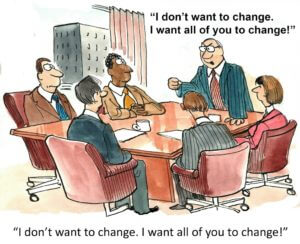
The top team needs to take ownership of the challenge as all too often they can be heard talking about how important the customer is, how we should be customer focussed, how much the customer matters to us while at the same time reminding the Call Center people that Average Handle Time (AHT) is king.
If you work in an environment which prioritizes AHT as a leading measure of success your concern about delivering a Successful Customer Outcome becomes secondary. So, it isn’t just about talking the talk, it is about the top team actioning a customer-centric vision supported by creating the right Attitudes, Behaviours and Culture.
Find out more and register for the CXMO webinar >JOIN HERE<
This really isn’t a choice. You have to start where you are now, move quickly and begin to harvest the benefits of customer-centric operations. An early objective is to examine the deliverables for all current projects and ask the question ‘how will achieving this contribute to improving the customer experience?’.
You will meet resistance from some folks who say ‘this project has nothing to do with the customer… it is an IT systems change, a change to internal processes, a new accounting approach etc.’ Your response is the natural ‘everything should contribute to Successful Customer Outcomes, and if we are doing things that don’t they should be stopped’.

The principle here is one of connecting the dots through to every customer interaction, which leads to another objective; identifying the critical customer experiences and mapping those in the context of their linkages with internal processes, rules and digital dependencies. This will then produce a prioritised list of targets for improvement.
There is no doubt some heavy lifting involved, not least of which is planning the migration from current state PMO to future state CXMO. There are many objectives to consider and your overall approach should be determined by the maturity of your organization.
To review the options join us in the webinar walking through recent CXMO case studies and emerging ‘next practices’.
Find out more and register for the CXMO webinar > JOIN HERE <
This hugely popular initiative, Successful Personal Outcomes, now in its third year, is once again available. With half a dozen videos and supporting materials, I walk you through how to model the approaches that have created success for people like Steve Jobs, Richard Branson, Anthony Hopkins and Tony Robbins.
To preview the contents and get onboard click the link (and I will see you on the inside).
Without further hoodoo here is the short intro video… http://www.successfulpersonaloutcomes.com
It is an EIGHT video FIVE-week program with handouts and LIVE closing webinar. These are the techniques we use actively in all our work with global clients. Tried, tested and proven they really do make that difference in whatever work and lives we have.
See you on the inside! http://www.successfulpersonaloutcomes.com
And to your upcoming Success,
Steve
What You’re Going to Learn:
Click on any Chapter to jump to the Playbook
Chapter 1: Why this Playbook was Created and Who Wrote it.
Chapter 2: Your Digital Stack: What kind of Online Profiling should CX Professionals invest their time in (and in what order)?
Chapter 3: Your Website/Blog and What it Should Do.
Chapter 4: Your Linkedin Page and Why it’s Extremely Important
Chapter 5: Using a “Newsletter” to Get More ‘Links’ from Noteworthy People
Chapter 6: How to Show up in CX Searches Ahead of Others
Chapter 7: How to get someone to help with your Career Aspirations



 So be pragmatic. Look for the bridges from here to there and you can have the best of both worlds.
So be pragmatic. Look for the bridges from here to there and you can have the best of both worlds.|
Element
|
Lean Six Sigma
|
Customer Experience Management/Outside-In
|
|
Mindset
|
Industrial Age
|
Customer Digital Age
|
|
Focus
|
Improve current work
|
Align to achieve SCO’s
|
|
Intent
|
Process will exist at the end of a review
|
Processes may be removed
|
|
Results
|
Focused on improving outputs
|
Focused on delivering Outcomes
|
|
Cost reduction
|
Triple Crown achievement (Cost/Service/Revenue)
|
|
|
Structure
|
Accepts the functional hierarchy
|
Proposes the appropriate structure to deliver SCO’s
|
|
Techniques
|
Effect based activity (value/ non-value added – waste identification – SPC etc.)
|
Causal based activity (what creates the work in the org. then let’s fix the causes)
|
|
Intelligent Processes
|
No mechanism exists to ensure processes are intelligent
|
Specifically designed to implement and mature intelligent processes
|
|
Customer
|
End to End working e.g. SIPOC
|
Centric working – the customer is at the heart of everything that happens
|
|
Are at the end and the beginning of processes
|
Are enlightened, Promiscuous, Rebellious, Prosumer, Multi-channel, high expectations
|
|
|
Enterprise objectives
|
Operational and tactical. Aims to fix process.
|
Strategic and Operational. Aims to implement a sustainable architecture.
|
|
Scope
|
Process based improvements
|
Enterprise-wide transformation
|
